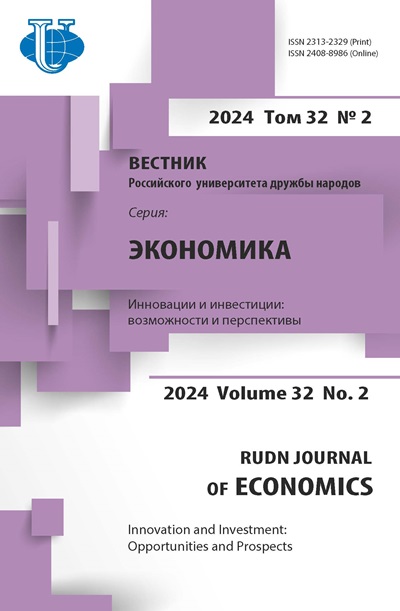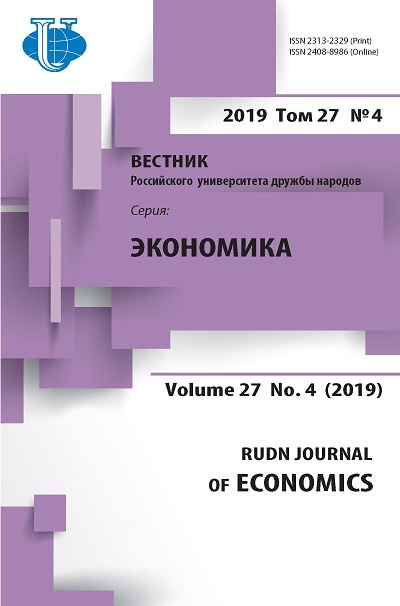Центральная Азия - сфера интересов Китая и России
- Авторы: Егорычева Е.А.1
-
Учреждения:
- Российский университет дружбы народов
- Выпуск: Том 27, № 4 (2019)
- Страницы: 732-742
- Раздел: ГЛОБАЛИЗАЦИЯ И ЭКОНОМИЧЕСКАЯ ИНТЕГРАЦИЯ
- URL: https://journals.rudn.ru/economics/article/view/23410
- DOI: https://doi.org/10.22363/2313-2329-2019-27-4-732-742
Цитировать
Полный текст
Аннотация
В последние десятилетия Россия и Китай углубляют свое сотрудничество. Это проявляется во многих областях: в соглашениях о взаимной торговле, инвестиционном и научном сотрудничестве, решении многих глобальных проблем человечества. Россия является активным участником проекта «Один пояс, один путь», инициируемого Китаем. Казахстан, Туркменистан, Узбекистан, Таджикистан и Киргизия также вовлечены в этот проект. Наряду с этим Казахстан и Киргизия являются членами Евразийского экономического союза. Целью статьи является выявление текущих интересов Китая и России в Центральной Азии. Рассматриваются торговые отношения между анализируемыми странами, а также инвестиционные проекты в рамках инициативы «Один пояс, один путь», которые Китай финансирует в странах Центральной Азии.
Ключевые слова
Об авторах
Елена Александровна Егорычева
Российский университет дружбы народов
Автор, ответственный за переписку.
Email: egorycheva_ea@pfur.ru
старший преподаватель кафедры национальной экономики
Российская Федерация, 117198, Москва, ул. Миклухо-Маклая, 6Список литературы
- Aristova, L. (2018). Transport integration in Eurasia: peculiarities of interaction of PRC, Central Asia countries. Eastern Analytics, (3), 15-19
- Crude Accountability. Retrieved from https://crudeaccountability.org/ (accessed: 14.10.2019)
- Goncharenko, S. (2018). One Belt - One Road: general prosperity or unused risks? Eastern Analytics, (3), 43-49
- Hedlund, S. (2019). Uzbekistan is trying to balance Chinese and Russian influence. Geopolitical Intelligence Services. Retrieved from https://www.gisreportsonline.com/uzbekistan-emerging-from-isolation,politics,2801.html (accessed: 14.10.2019).
- Hofman, I. (2015). Opening up markets or fostering a new satellite state? Detangling the impetuses of Chinese land investments in Tajikistan. BRICS Initiative for Critical Agrarian Studies (BICAS). Retrieved from https://www.tni.org/files/download/bicas_working_ paper_4_hofman.pdf (accessed: 14.10.2019).
- International Trade Centre. (2019). Trade Map - Trade statistics for international business development. Retrieved from https://www.trademap.org/ (accessed: 28.10.2019).
- Kerimkhanov, A. (2019). Chinese, Kyrgyz trade turnover hits $ 2B in 2018. AzerNews. Retrieved from https://www.azernews.az/region/145548.html (accessed: 14.10.2019).
- Laruelle, M. (2018). China's belt and road initiative and its impact in Central Asia. OHCHR Library Catalogue. Retrieved from https://searchlibrary.ohchr.org/record/25989 (accessed: 27.08.2019).
- Mogilevskii, R. (2019). Kyrgyzstan and the Belt and Road Initiative. Retrieved from https:// www.ucentralasia.org/Resources/Item/2153/EN (accessed: 14.10.2019).
- Sarker, M., Hossin, M., Yin, X., & Sarkar, M. (2018). One Belt One Road Initiative of China: Implication for Future of Global Development. Modern Economy, 9(4), 623-638.
- Svetlicinii, A. (2019). China’s Belt and Road Initiative and the Eurasian Economic Union: Integrating the Integrations. Retrieved from https://vgmu.hse.ru/data/2018/03/02/116 5084266/Svetlicinii%205-2018.pdf (accessed: 27.09.2019).















